Desert Rose Plant
- October 25, 2023
- 2 comment
The Desert Rose, scientifically known as Adenium obesum, is a fascinating and distinctive succulent plant renowned for its striking appearance and resilience. Native to arid regions of Africa and the Arabian Peninsula, the Desert Rose has adapted to thrive in hot, dry climates. Its most distinctive feature is its swollen, bulbous base, which stores water to sustain the plant during extended periods of drought.
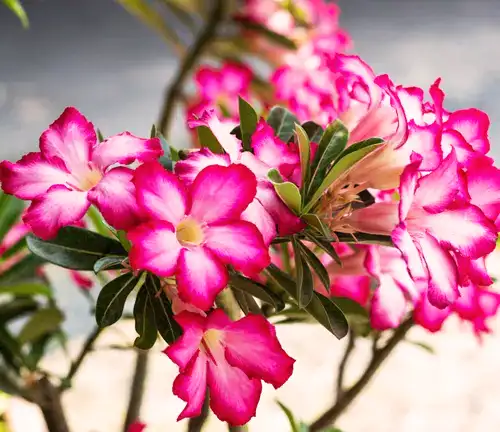
The plant’s thick, fleshy leaves are typically clustered at the tips of its branches, and its stunning, trumpet-shaped flowers come in various vibrant colors, such as red, pink, and white.
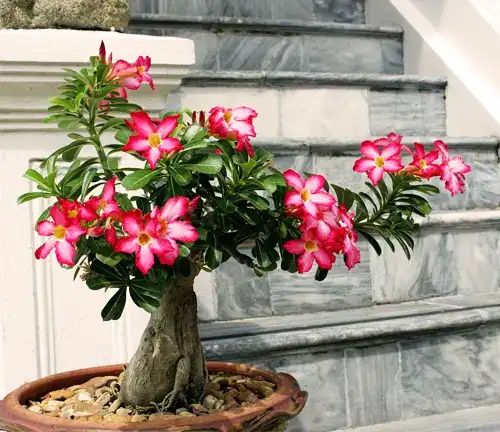
Desert Roses are popular choices for both indoor and outdoor gardening, thanks to their visually appealing blooms and low maintenance requirements. Garden enthusiasts often enjoy shaping and pruning these plants to create unique, bonsai-like forms. While the Desert Rose is a hardy and drought-resistant plant, it requires well-draining soil, plenty of sunlight, and minimal watering to truly thrive, making it an excellent addition to arid gardens and households.
| Characteristics | Description |
| Scientific Name | Adenium obesum |
| Common Names | Desert Rose, Sabi Star, Kudu, Impala Lily |
| Family | Apocynaceae |
| Plant Type | Succulent |
| Native Range | Arid regions of Africa and the Arabian Peninsula |
| Size | Typically grows to a height of 1-3 feet (30-90 cm) when cultivated. |
| Growth Habit | Shrub-like with a swollen, water-storing caudex (base). |
| Leaves | Fleshy, green or variegated, arranged in clusters at the branch tips. |
| Flowers | rumpet-shaped, five-petaled flowers in various colors including red, pink, white, and sometimes multi-colored. |
| Bloom Time | pring and occasionally throughout the year in favorable conditions. |
| Light Requirements | Full sun to partial shade, at least 6 hours of direct sunlight per day. |
| Watering | Allow the soil to dry out between waterings, as overwatering can lead to root rot. |
| Soil Type | Well-draining, gritty soil mix to prevent waterlogged roots. |
| Temperature Range | Thrives in warm to hot temperatures, not frost-toleran |
| Fertilization | Feed with a balanced, diluted, liquid fertilizer during the growing season. |
| Pruning | Pruning is common to shape and control growth, often done in late winter or early spring. |
| Pests and Diseases | Susceptible to aphids, mealybugs, and root rot if overwatered. |
| ontainer Gardening | Well-suited for container planting, provided there is adequate drainage. |
| Special Features | Drought-resistant, often used for bonsai or ornamental purposes. |
| Hardiness Zones | Typically grown as an indoor plant in colder climates or in USDA Zones 10-11 outdoors. |
Botanical Beauty of the Desert Rose Plant
The Desert Rose, scientifically known as Adenium obesum, is a botanical masterpiece that captivates with its exceptional beauty. Originating from the arid landscapes of Africa and the Arabian Peninsula, this succulent marvel has adapted to thrive in the harshest of conditions. Its allure lies in its striking appearance, characterized by a swollen, water-storing base, lush clusters of fleshy leaves, and a mesmerizing array of trumpet-shaped flowers. Available in a vibrant spectrum of colors, from passionate reds to delicate pinks, the Desert Rose adds a touch of exotic elegance to any landscape or indoor garden. Its charming, bonsai-like appearance and vibrant blossoms make it a favorite among gardeners and collectors worldwide.
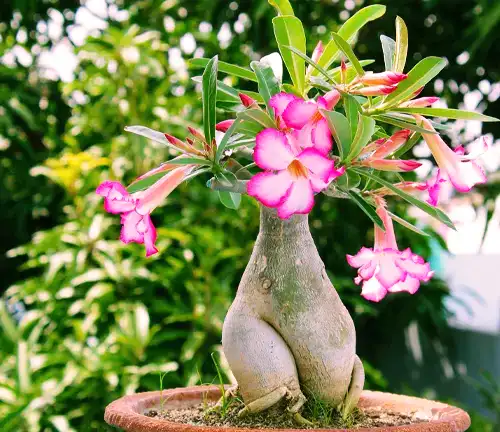
Ecological Importance

While the Desert Rose is primarily known for its ornamental value, it also holds ecological significance in its native habitats. In arid regions, it provides nectar to various pollinators, including bees and butterflies. Its presence can aid in the pollination of other native plant species. Moreover, it contributes to the biodiversity of these often challenging ecosystems, offering shelter to small animals and insects seeking refuge from the scorching sun.
Cultivation and Conservation
Cultivating the Desert Rose has become a popular endeavor for garden enthusiasts. However, its increasing demand has led to concerns about the conservation of wild populations. Sustainable cultivation practices, such as using seeds or responsibly sourced specimens, are essential to preserve this species in its native habitats. Nurseries worldwide have also undertaken propagation efforts to ensure a steady supply of these captivating plants for horticultural purposes while supporting conservation initiatives.

Fragrance
One delightful surprise that accompanies the Desert Rose’s resplendent blooms is its subtle, sweet fragrance. While not overpowering, the fragrance adds an extra layer of appeal, making the plant even more enchanting. In outdoor gardens or on sunny balconies, the Desert Rose’s scent can pleasantly linger in the air, creating a soothing and aromatic atmosphere.
Soil Stabilization
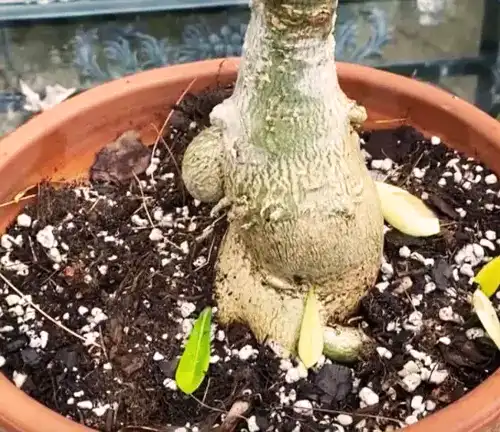
In its native arid environments, the Desert Rose plays an important role in soil stabilization. Its extensive root system helps anchor the soil, preventing erosion, especially during heavy rainfall. By enhancing the stability of the soil, it contributes to maintaining the ecological balance of these fragile ecosystems.
Common Uses
Beyond its ornamental value, the Desert Rose has a range of practical uses. In traditional medicine, parts of the plant have been used for various remedies. Its caudex has been employed for crafting traditional musical instruments in some cultures. Additionally, its wood-like appearance is coveted by artisans and woodworkers for crafting unique pieces.
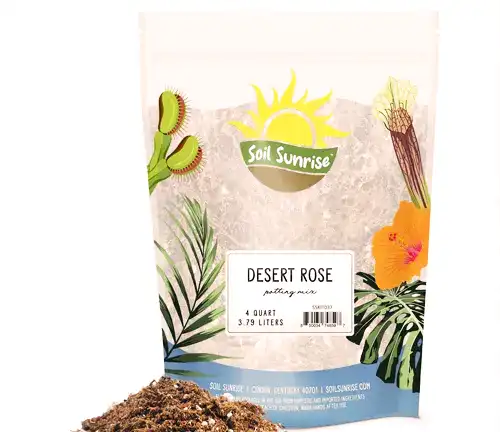
Benefits
The Desert Rose, with its striking beauty, resilience, and ecological importance, offers numerous benefits to those who cultivate and appreciate it. Whether used for ornamental purposes in gardens or homes or to support the conservation of its native habitats, this plant is a testament to the wonders of nature. Its fragrance, soil-stabilizing qualities, and versatile applications further enhance its appeal. Above all, the Desert Rose reminds us of the remarkable biodiversity our planet holds, even in the most challenging environments, and encourages us to appreciate and preserve such botanical treasures.
Different Species
Adenium obesum
This is the most commonly cultivated species and is often referred to as the “Desert Rose.” It features a wide variety of flower colors, including shades of red, pink, and white.
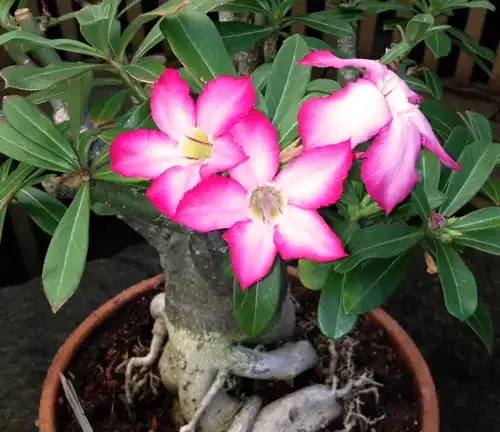
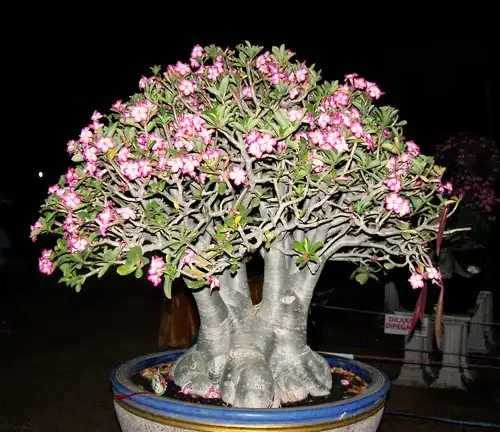
Adenium arabicum
Native to Yemen and Saudi Arabia, this species is known for its smaller, more compact growth habit and an array of flower colors, including white, pink, and red.
Adenium somalense
Found in the Horn of Africa, this species tends to be more shrub-like with smaller leaves and clusters of pink or white flowers.
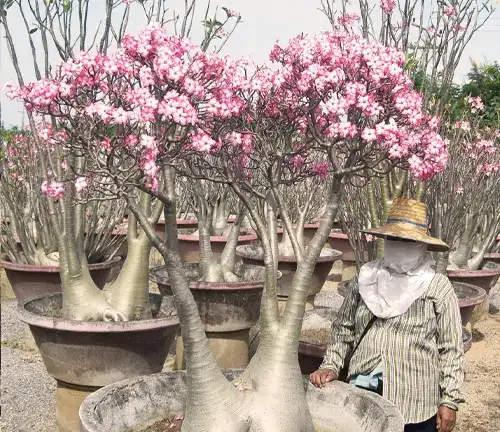
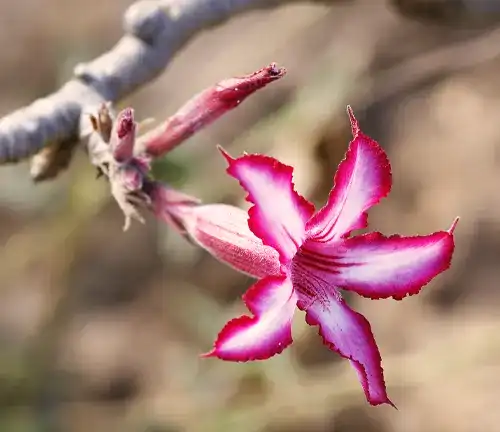
Adenium multiflorum
Native to East Africa, this species is recognized for its profusion of smaller, tubular pink or white flowers.
Adenium swazicum
Native to Swaziland and South Africa, this species features white or pale pink flowers with distinct pink stripes or streaks.
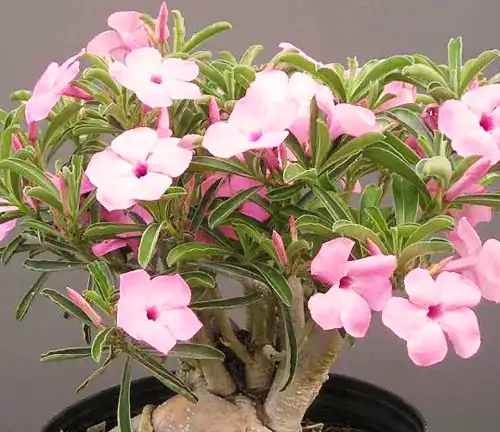
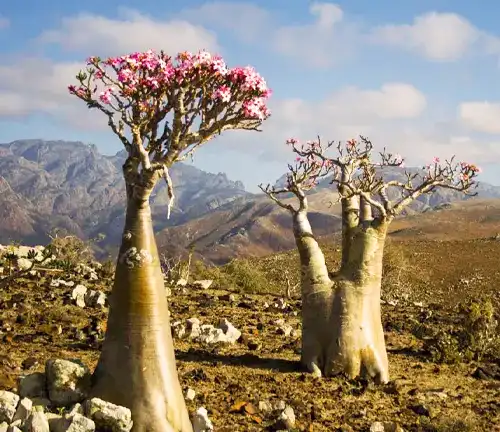
Adenium socotranum
This species hails from the island of Socotra in the Indian Ocean and is characterized by its large caudex and pale pink to white flowers.
Adenium boehmianum
Found in Somalia and Kenya, this species is known for its reddish-brown stems and pink to red flowers.


Adenium crispum
Native to the Arabian Peninsula, this species stands out for its distinct, crinkled leaves and pink to white flowers.
Adenium coetaneum
Also known as the “Kudu Lily,” this species is found in South Africa and exhibits reddish stems and pink to white flowers.
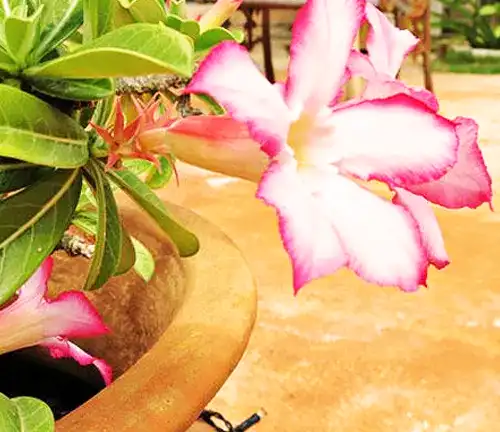
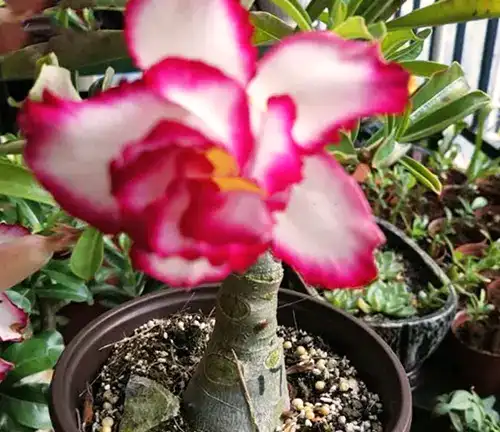
Adenium multiflorum ssp. swazicum
A subspecies of A. multiflorum, this plant is found in Swaziland and South Africa, and it has pale pink or white flowers with deep pink or reddish streaks.
Frequently Asked Questions (FAQs)
- What is a Desert Rose plant?
The Desert Rose (Adenium obesum) is a succulent plant native to arid regions of Africa and the Arabian Peninsula. It’s known for its striking appearance, featuring a swollen base, fleshy leaves, and colorful trumpet-shaped flowers. - How do I care for my Desert Rose plant?
Provide well-draining soil, lots of sunlight, and water sparingly, allowing the soil to dry out between waterings. Protect it from frost, maintain proper humidity, and consider pruning to shape its growth. - Can I grow Desert Rose indoors?
Yes, you can grow Desert Rose indoors. Place it near a sunny window or use grow lights to provide adequate sunlight. Ensure good air circulation and well-draining pots. - What are the common flower colors of Desert Roses?
Desert Roses produce flowers in various colors, including shades of red, pink, white, and sometimes multi-colored blooms. - How often should I water my Desert Rose plant?
Water sparingly, approximately every 1-2 weeks during the growing season. Reduce watering in the winter months when the plant is semi-dormant. - Can I propagate Desert Rose from cuttings or seeds?
Yes, you can propagate Desert Roses from both cuttings and seeds. Cuttings tend to be more popular for preserving specific traits, while seeds may result in slight variations. - Are Desert Roses toxic to pets or humans?
Desert Roses can be toxic if ingested, so it’s important to keep them out of reach of pets and children. - How can I prevent common pests and diseases in Desert Roses?
Watch for common issues like aphids and mealybugs. Maintain proper care practices, such as not overwatering, to prevent root rot. Neem oil or insecticidal soap can help control pests. - Can I shape my Desert Rose into a bonsai-like form?
Yes, Desert Roses are commonly shaped and pruned to create bonsai-like forms. Regular pruning can help control the plant’s growth and achieve desired shapes. - Are there any special fertilization requirements for Desert Roses?
Use a balanced, diluted liquid fertilizer during the growing season (spring and summer) to provide essential nutrients. Avoid over-fertilization, which can harm the plant. - Do Desert Roses have any cultural or traditional uses?
In some cultures, Desert Roses have been used in traditional medicine, and parts of the plant have been employed for crafting musical instruments and other items due to their wood-like appearance.



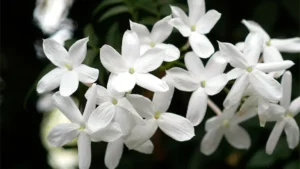
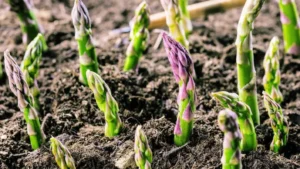
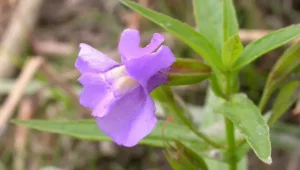
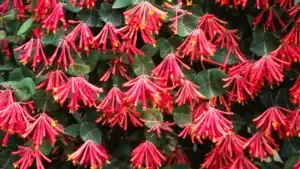

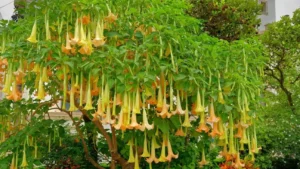
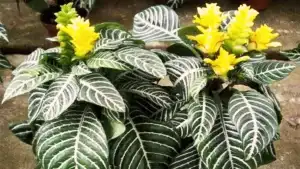
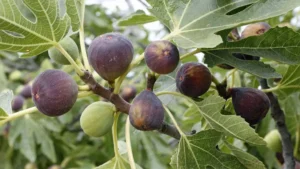
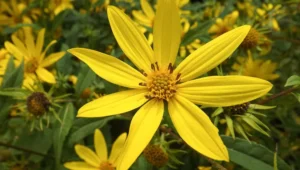
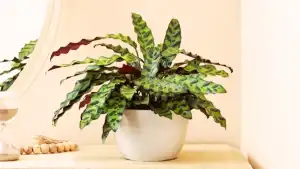
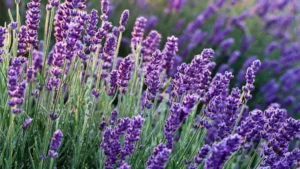
Where grafted varities of Adenium is available near by, I am living in Point Cook Melbourne.
Vipin shukla
October 31, 2023 9:45 pmYou can check out Sandys Adeniums, this is an online shop, where she sells both grafted and seed grown plants, and posts all over Australia. She is in Cairns NQ
Margot
November 2, 2023 3:33 am